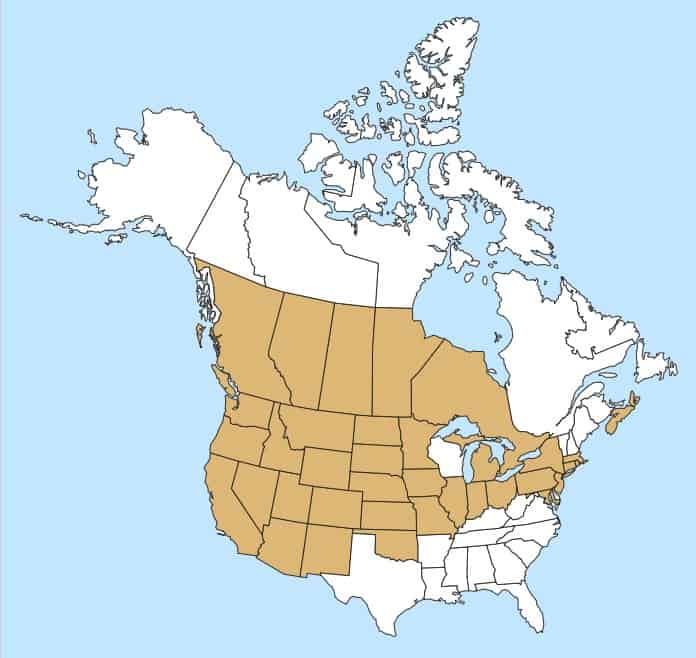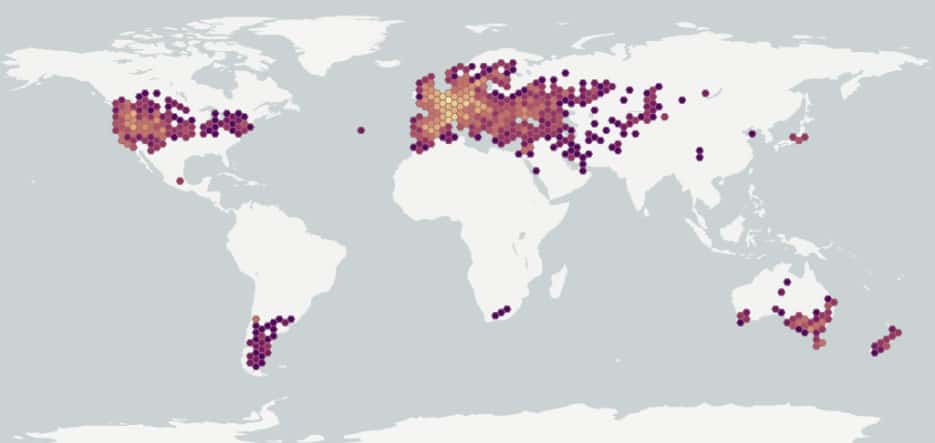Lepidium draba
Overview
Aperçu
Regulation :
Remarques Réglementation:
- CFIA Weed Seeds Order - Class 2: Primary Noxious Weed Seeds
Regulation Notes:
Distribution :
Répartition :
Native to northern Africa, central and eastern Europe and temperate Asia. Introduced in North America, South Africa, Australia, New Zealand, Argentina, Chile, and beyond its native range in Europe (USDA-ARS 2021). Found throughout the United States but particularly invasive in the western states (Francis and Warwick 2008). In Canada, it occurs in Alberta, British Columbia, Manitoba, New Brunswick, Ontario, Saskatchewan and is rare in Nova Scotia (Brouillet et al. 2010+).
Habitat and Crop Association :
Habitat et Cultures Associées :
Cultivated fields, old fields, gardens, parks, woodlots, orchards, pastures, rangelands, meadows, riparian areas, roadsides, railway lines and disturbed areas (Darbyshire 2003; Francis and Warwick 2008; CABI 2021).
A weed of Zea mays (corn), cereals, Solanum tuberosum subsp. tuberosum (potatoes), Beta vulgaris subsp. vulgaris (sugarbeet), Helianthus annuus (sunflower), Nicotiana tabacum (tobacco), vegetables, Medicago sativa (alfalfa) and vineyards in Europe and a common weed of Hordeum vulgare subsp. vulgare (barley) and Avena sativa (oat) in Canada (CABI 2021).
Economic Use, cultivation area, and Weed Association :
Utilisation économique, zone de culture et association de mauvaises herbes :
Duration of Life Cycle :
Durée du cycle vital:
Perennial
Dispersal Unit Type :
Type d’unité de dispersion :
Seed
General Information
RENSEIGNEMENTS GÉNÉRAUX
Lepidium draba was probably introduced into North America in the 19th century as an ornamental or garden plant (Francis and Warwick 2008). Plants require soil disturbed by cultivation or animals to become established (Warwick and Francis 2008).
.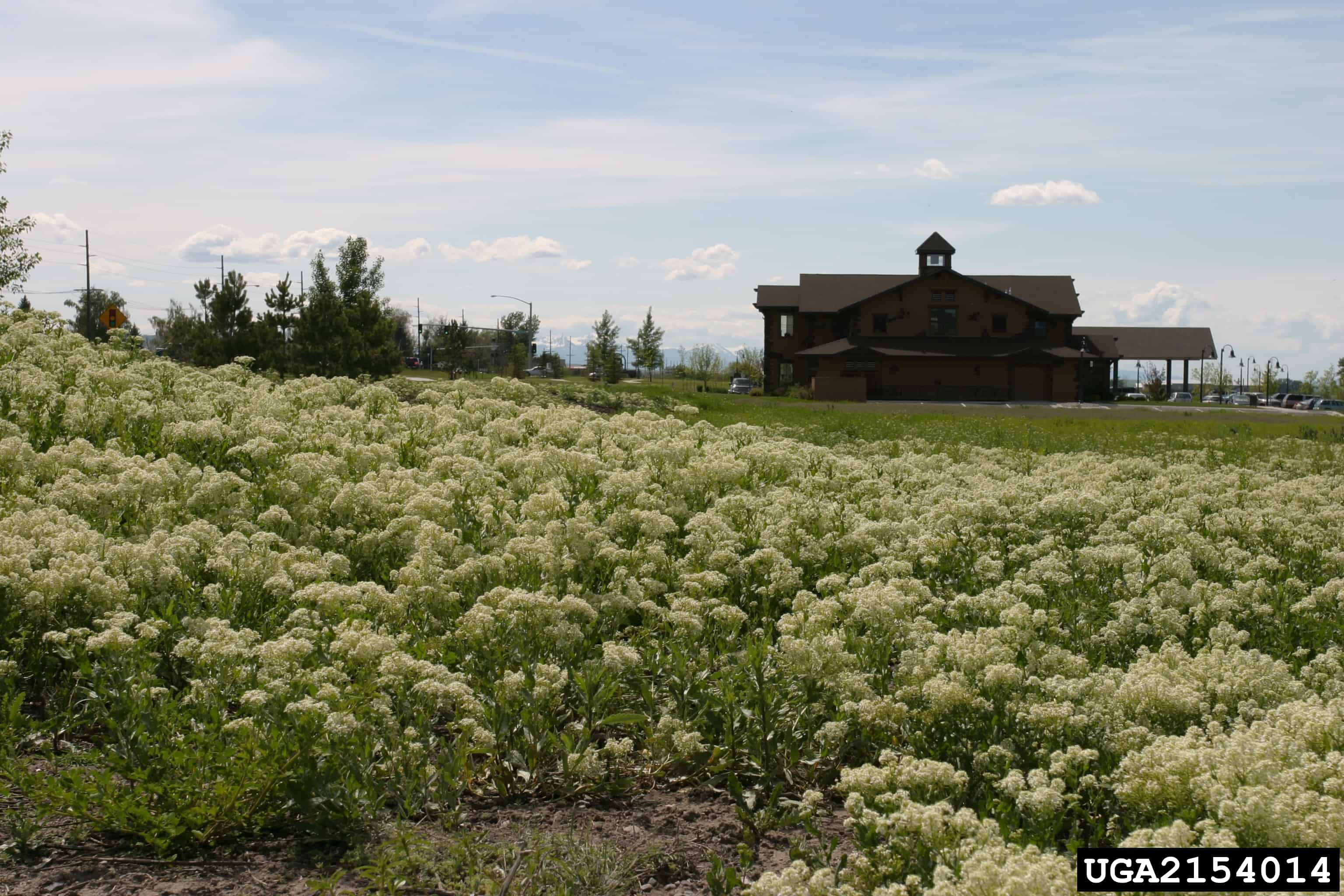
Lepidium draba infestation (Montana Statewide Noxious Weed Awareness and Education Program , Montana State University, Bugwood.org)
Identification
Identification
-
Silicle
Size
- Silicle length: 2.5 – 3.5 mm; width 3.0 – 5.0 mm (Francis and Warwick 2008)
Shape
- Silicles are heart shaped
Surface Texture
- Silicle surface smooth with a raised vein pattern
Colour
- Silicle dull yellow coloured
Other Features
- Silicle shiny green coloured when immature
- A persistent style remnant is at the end of the silicle, 0.8 – 1.6 mm long (Francis and Warwick 2008)
- Silicles do not open at maturity to release seeds (FNA 1993+)
- Silicle is 2 chambered with 1 seed per chamber, sometimes seedless (Francis and Warwick 2008)
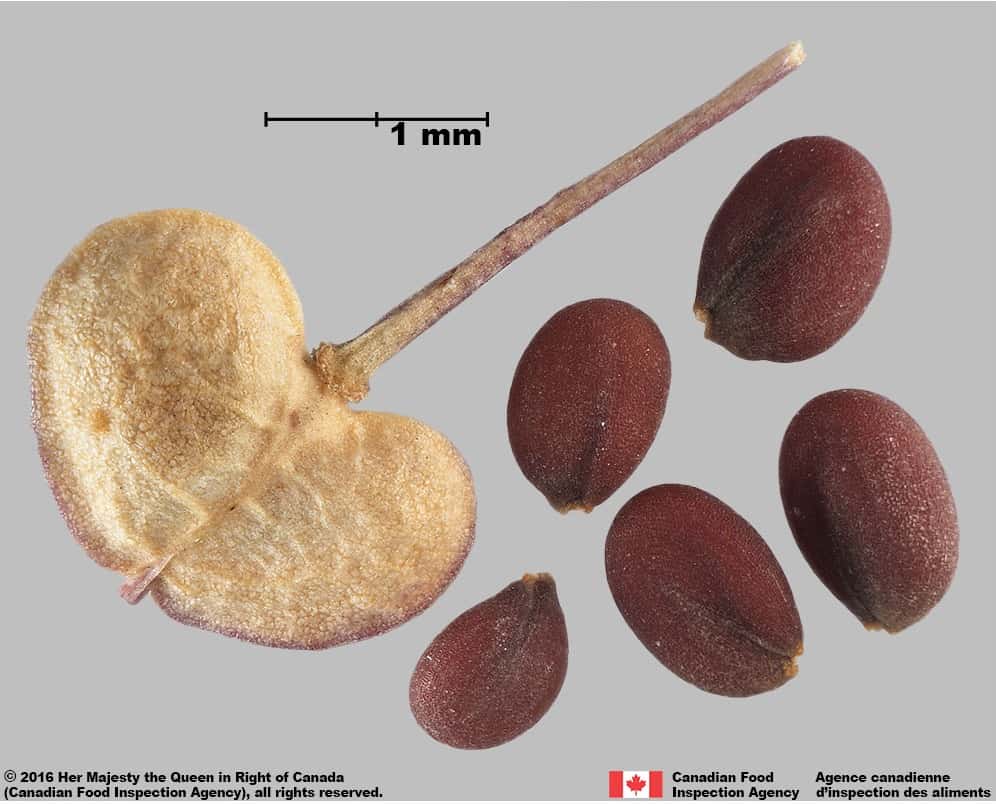
Heart-pod hoary cress (Lepidium draba subsp. draba) pod and seeds

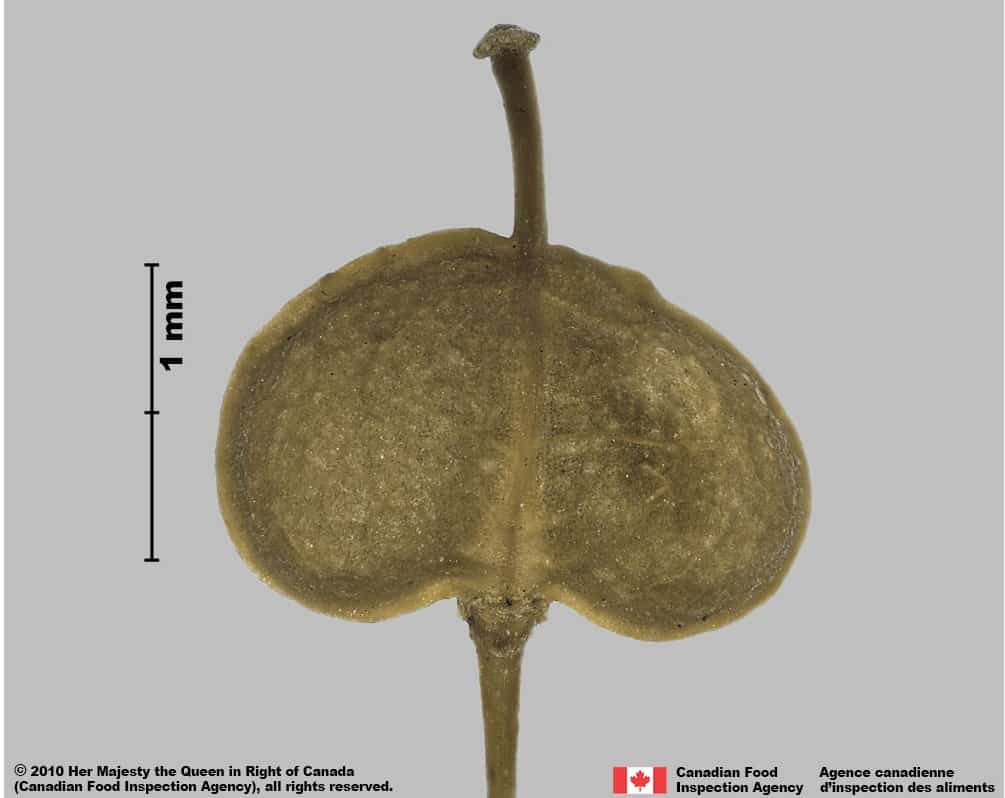
-
Seed
Size
- Seed length: 2.0 – 2.5 mm; width: 1.5 mm;
*Note: minimum and maximum of 10 seeds in a normal range of this species using image measurement (ISMA 2020)
Shape
- Seed oval or egg-shaped, compressed in edge view
Surface Texture
- Seed surface is granular textured, ridged reticulate visible under high magnification
Colour
- Seed reddish-brown or brown
Other Features
Hilum & Hilum area
- Hilum in a notch at the narrow end of the seed, covered with yellowish tissue
- Hilum area appears pinched, strongly compressed in edge view
Other Features
- The seed is egg-shaped in cross section, with a shallow furrow between the radicle and cotyledons
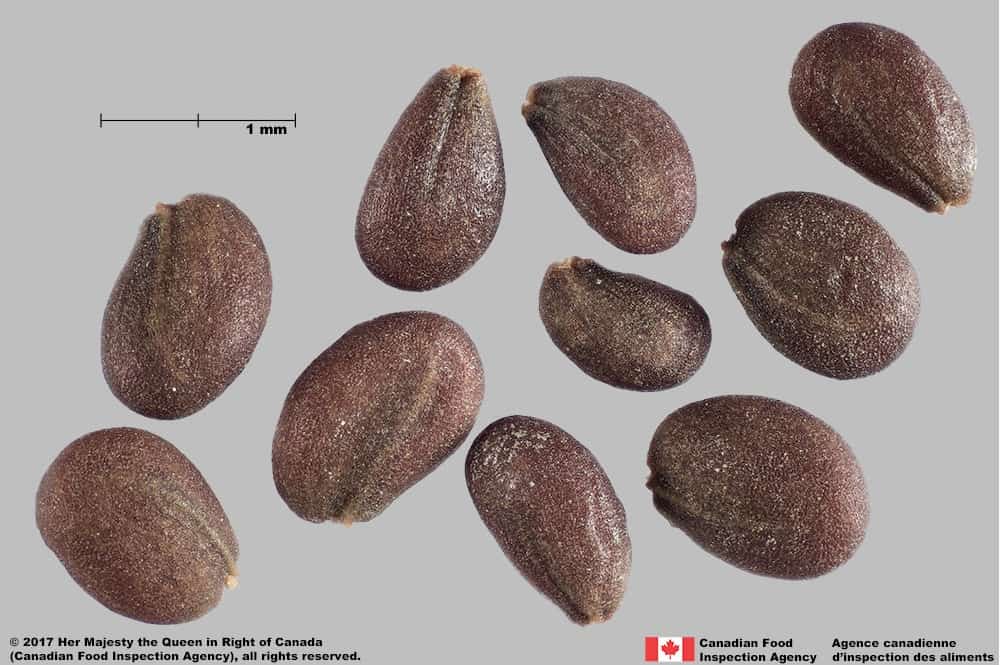
Heart-pod hoary cress (Lepidium draba subsp. draba) seeds

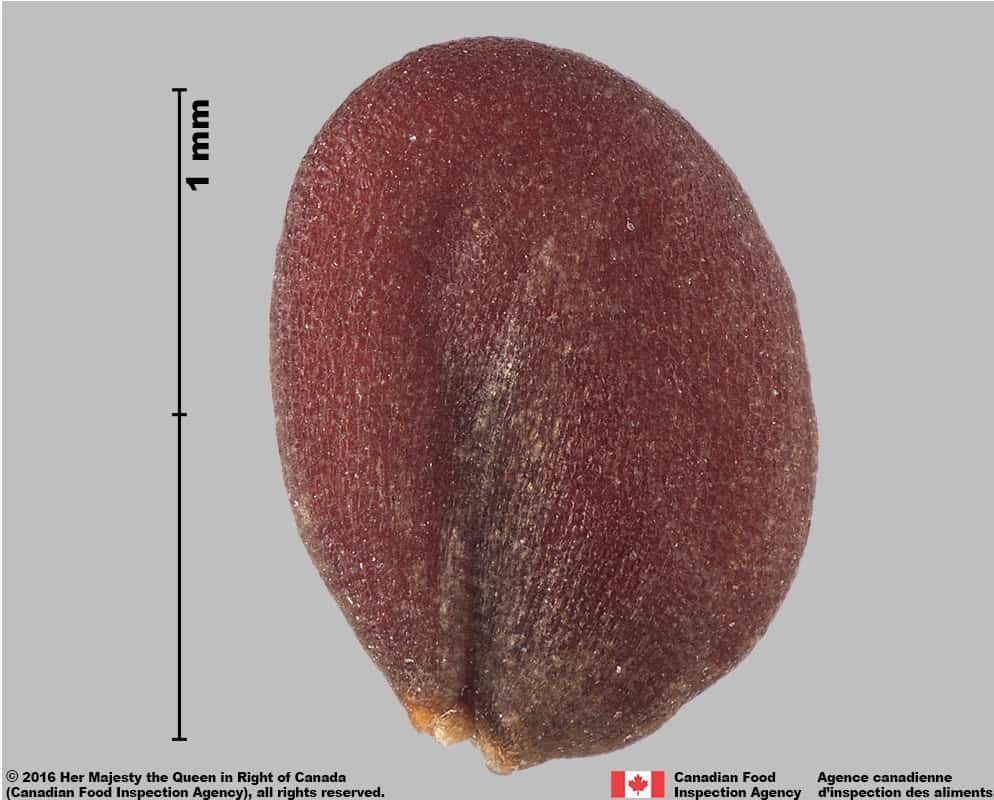
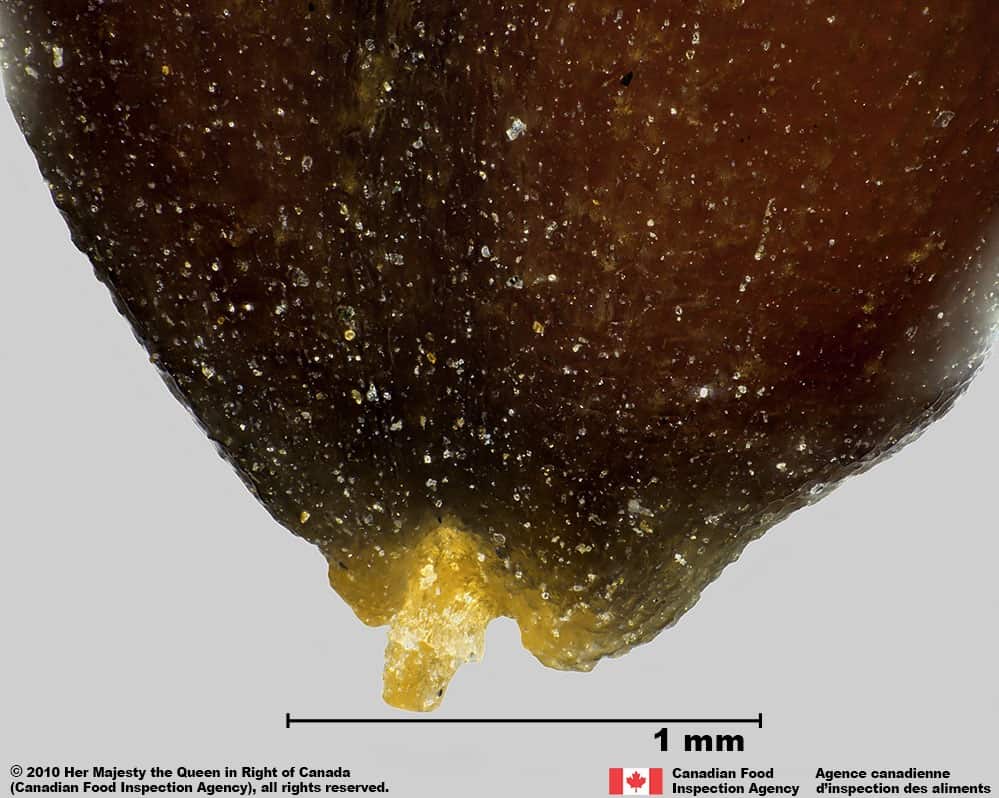
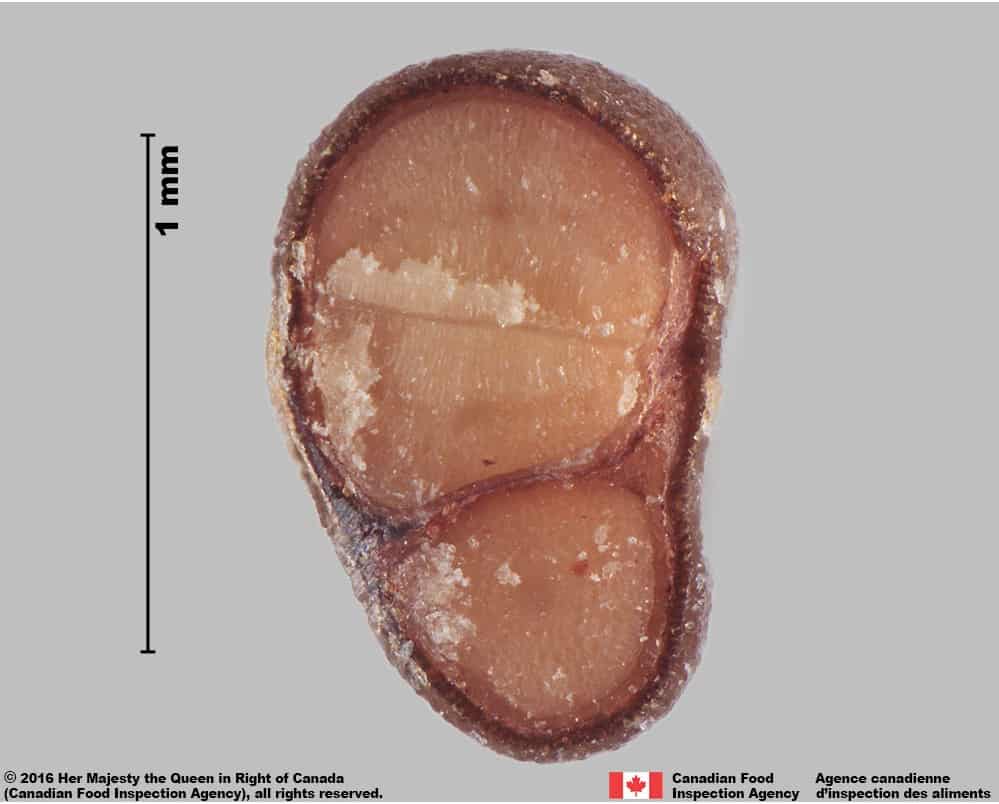
-
Embryo
Size
- Embryo fills the seed
Shape
- Embryo is bent
Endosperm
- Endosperm is scant or lacking, nutritive tissue contained within cotyledons
Other Features
- Cotyledons are oval shaped, soft and orange coloured
- Radicle is generally more narrow than the cotyledons

Heart-pod hoary cress (Lepidium draba subsp. draba) seed, cross-section

Identification Tips
CONSEILS POUR L’IDENTIFICATION
The oval or egg-shaped seeds of Lepidium draba appear similar to other Lepidium species such as L. chalepense, L. appelianum, L. campestre, L. sativum and L. densiflorum. The silicles of L. draba are heart-shaped without a V-shaped notch at one end and do not open at maturity. Seeds can be distinguished by their reddish brown or brown colour, compressed shape in edge view and granular texture. Silicles are needed to distinguish between L. draba, L. chalepense and L. appelianum. L. draba silicles are heart-shaped without surface hairs compared to the similar species.

Heart-pod hoary cress (Lepidium draba subsp. draba) seeds






Additional Botany Information
AUTRES RENSEIGNEMENTS BOTANIQUES
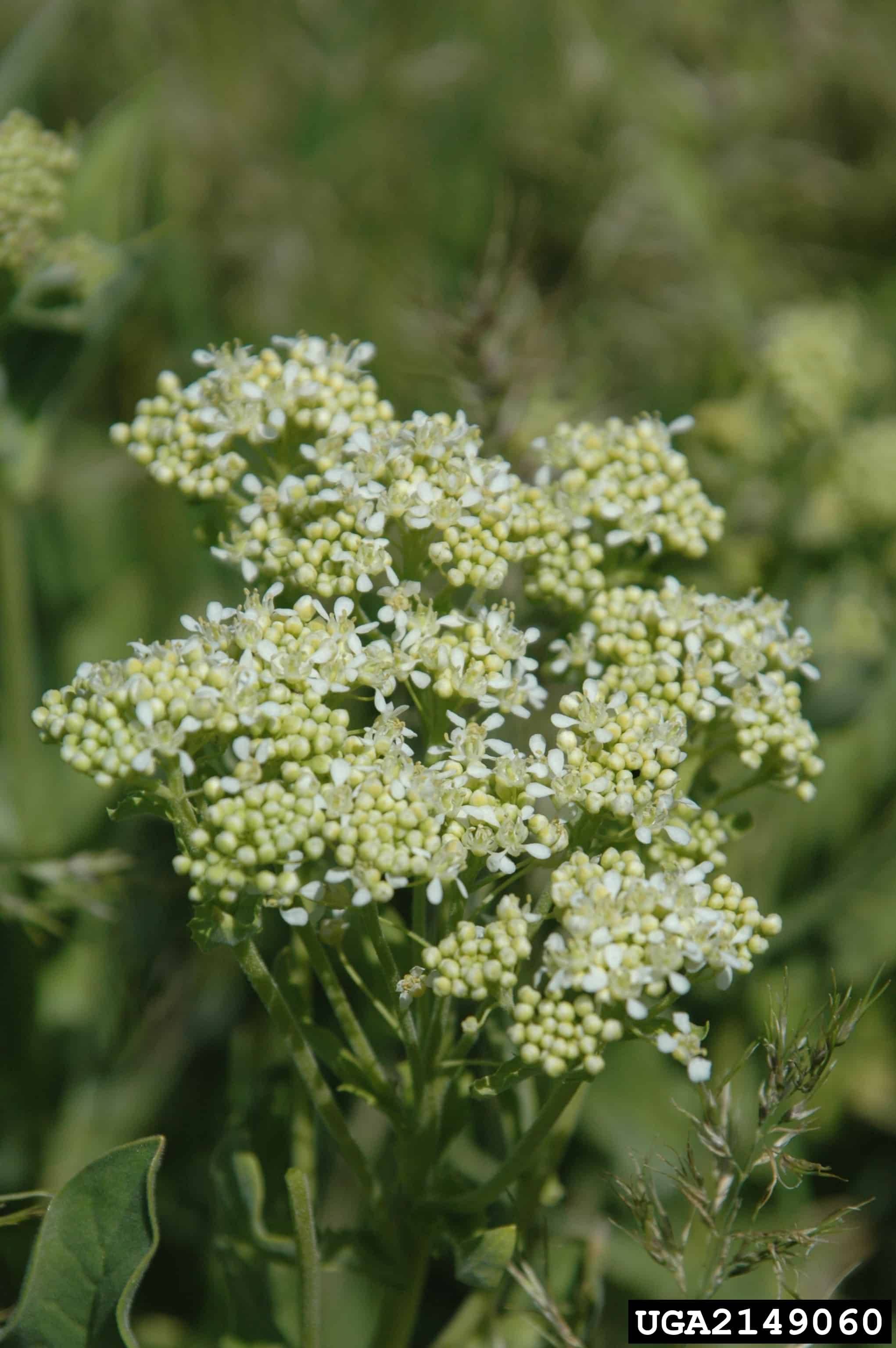
Lepidium draba inflorescence (Montana Statewide Noxious Weed Awareness and Education Program , Montana State University, Bugwood.org)

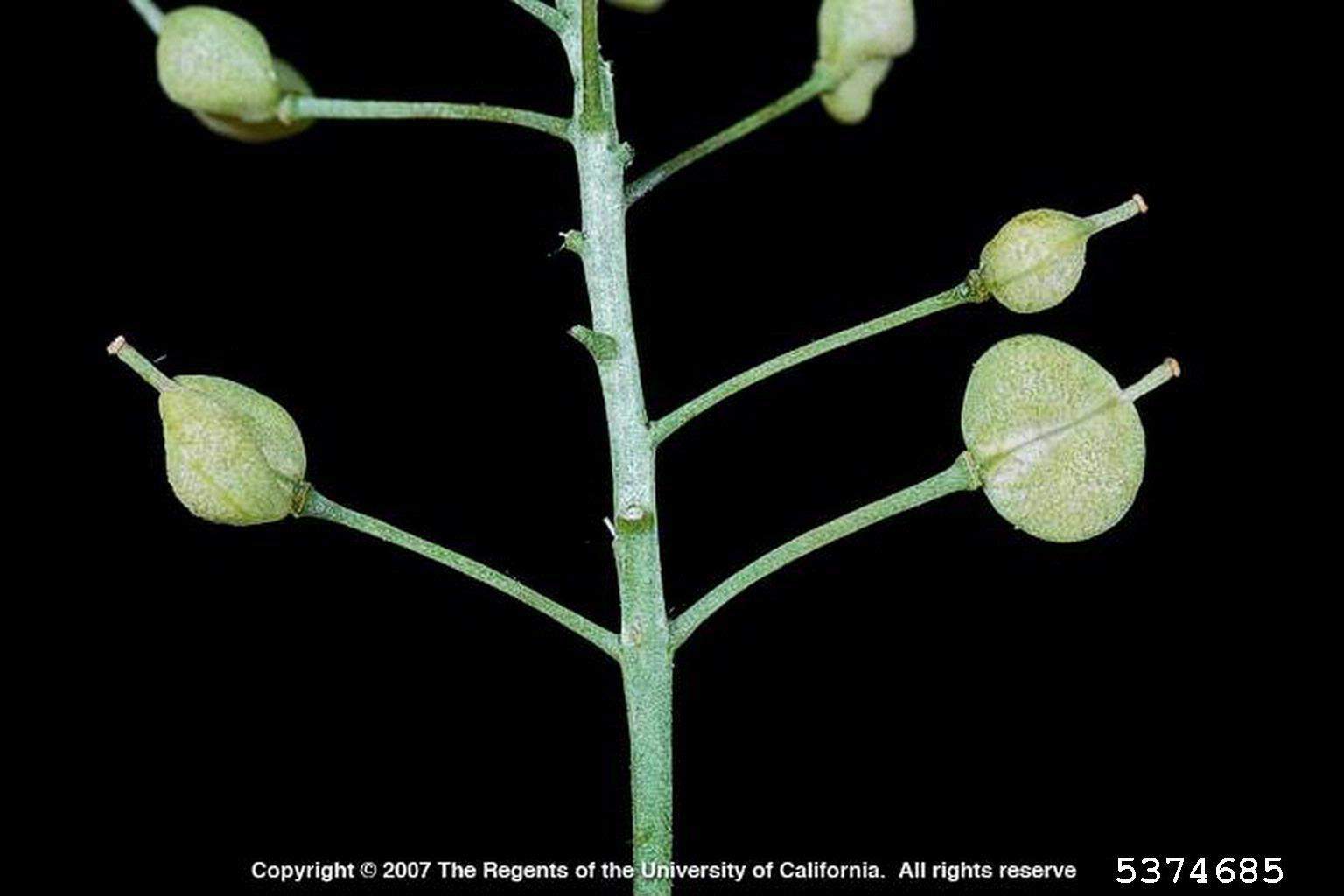
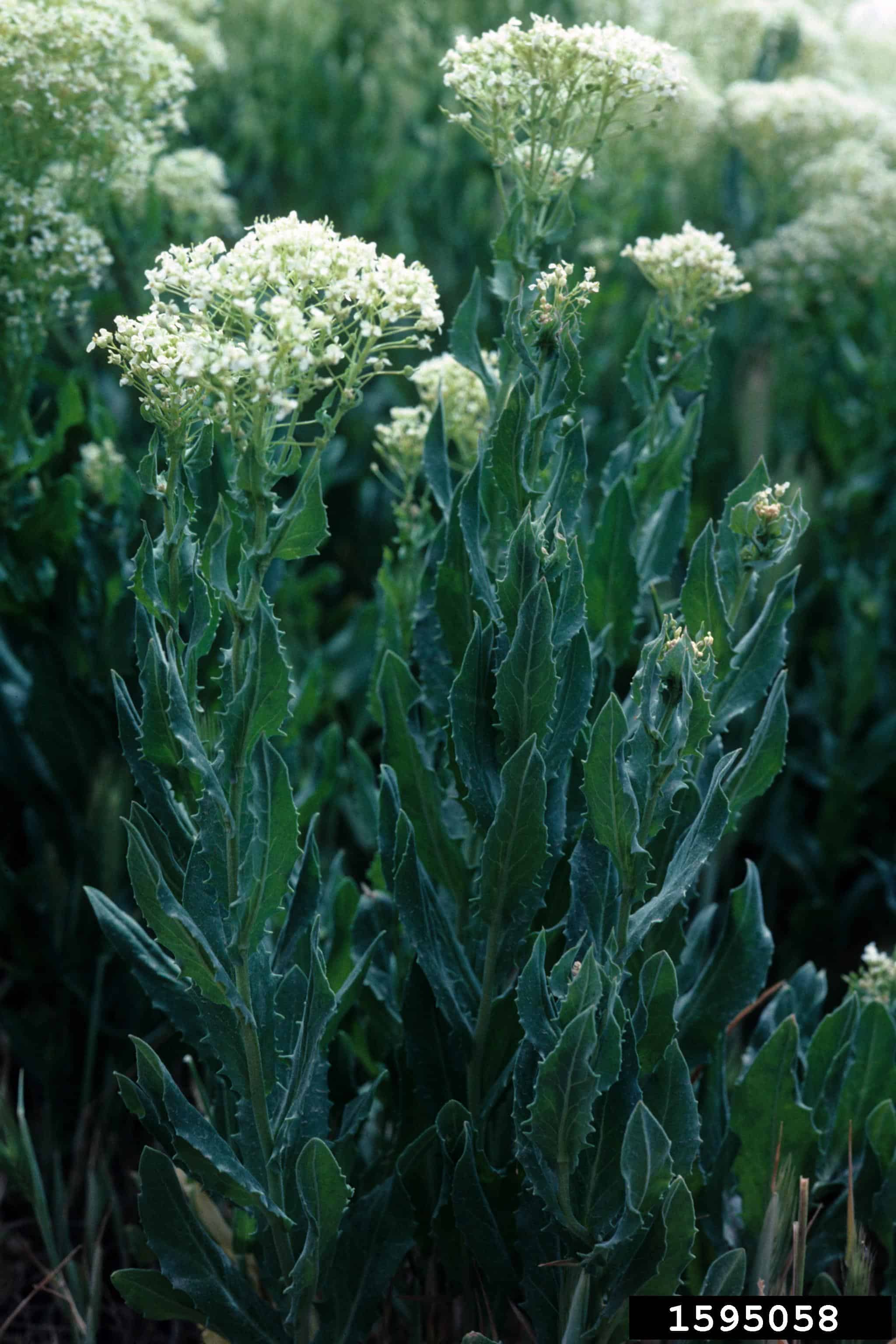
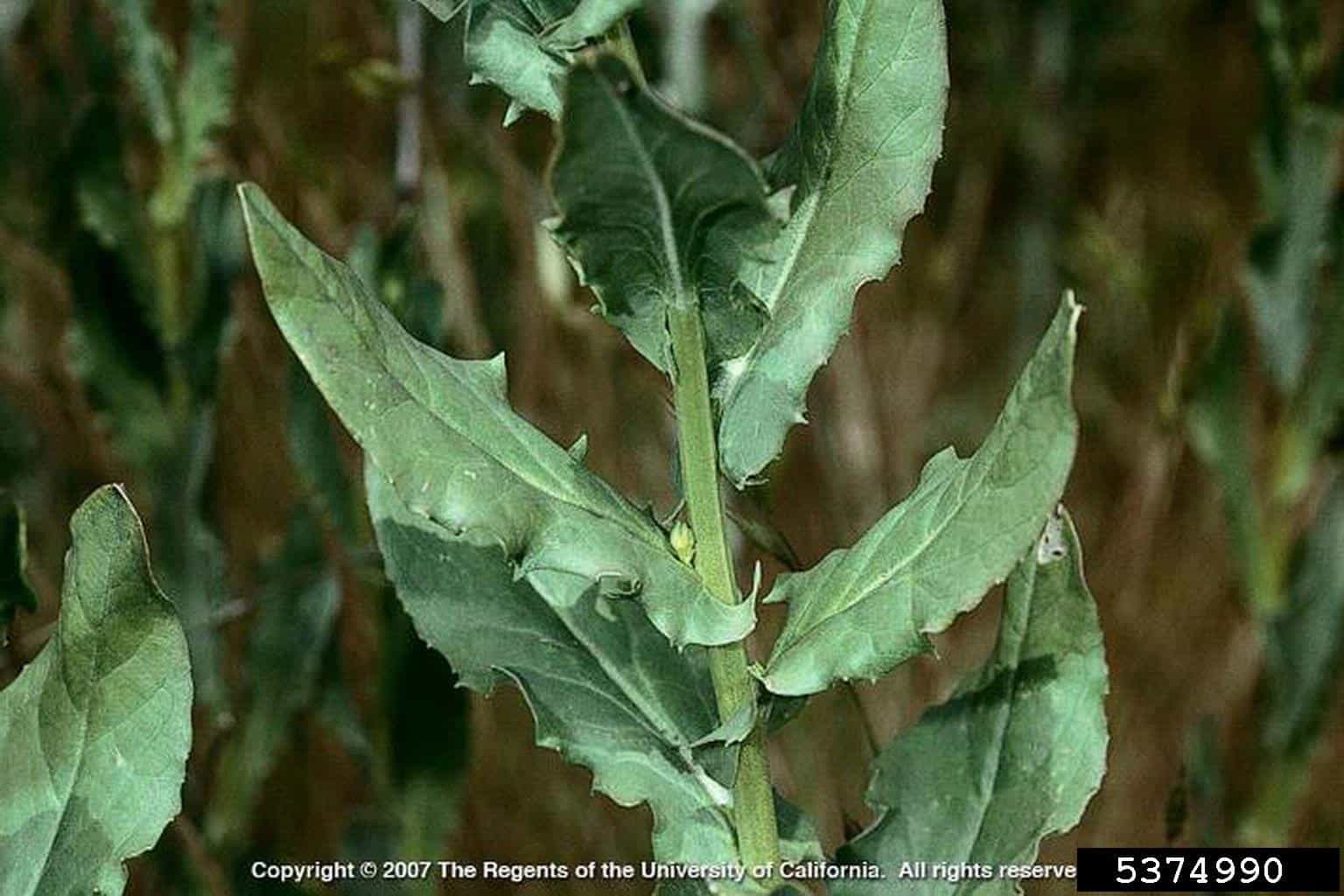
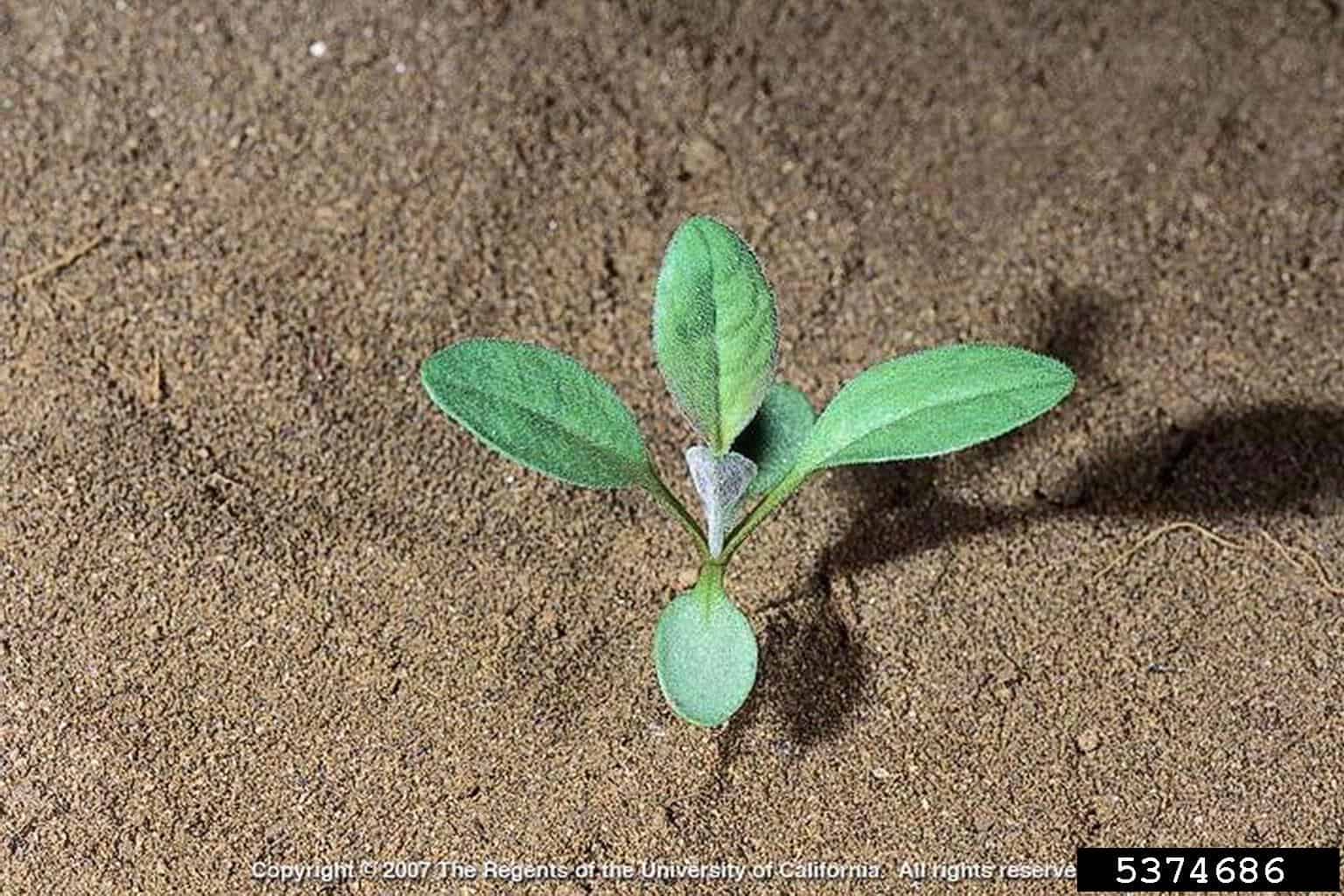
Similar Species
ESPÈCES SEMBLABLES
Similar species are based on a study of seed morphology of various species, and those with similar dispersal units are identified. The study is limited by physical specimen and literature availability at the time of examination, and possibly impacted by the subjectivity of the authors based on their knowledge and experience. Providing similar species information for seed identification is to make users aware of similarities that could possibly result in misidentification.
Lepidium appelianum Al-Shehbaz (globe-pod hoary cress)
L. appelianum silicles are generally larger (length: 3.0 – 4.5 mm; width: 2.5 – 4.5 mm, Francis and Warwick 2008), round shaped without a vein pattern, have surface hairs and are strongly inflated in edge view.
Lepidium chalepense L. (lens-pod hoary cress)
L. chalepense silicles are generally larger (length: 2.5 – 6.0 mm long; width: 4.0 – 6.0 mm, Francis and Warwick 2008), round shaped without a vein pattern, inflated in edge view. The seeds generally have a smaller radicle than L. draba, and may have a deeper furrow on the seed surface.
Click to select species
Cliquez pour sélectionner les espèces
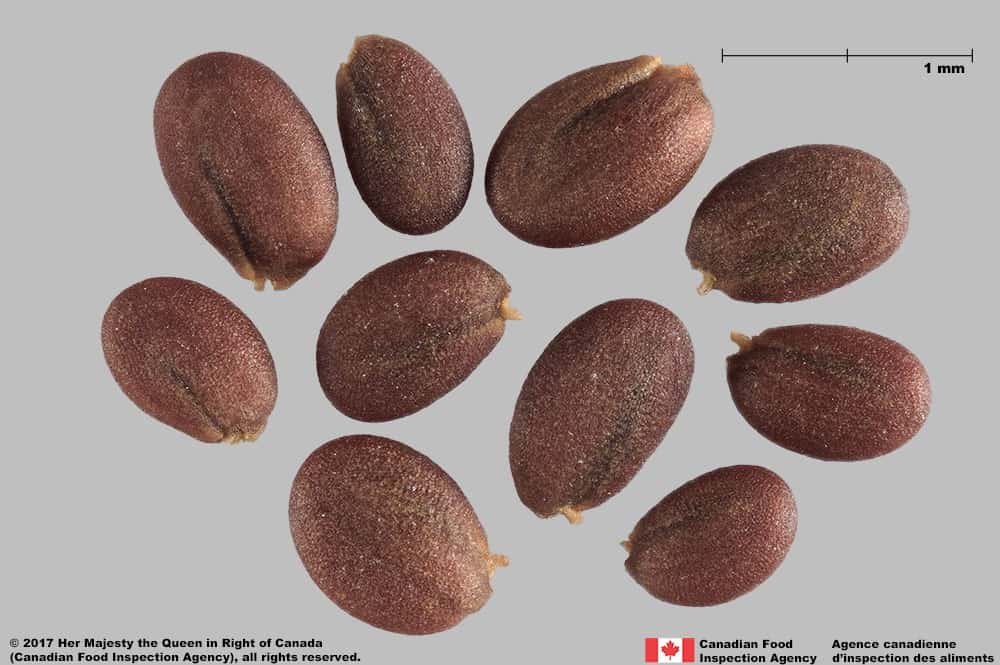
Lepidium appelianum
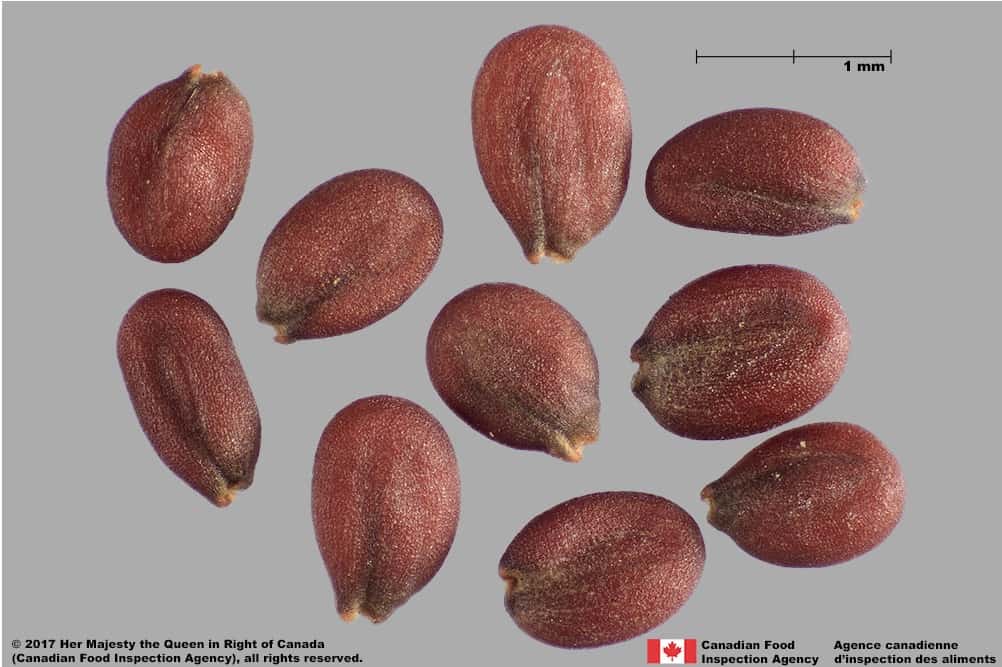
Lepidium chalepense
Comparison Window
Fenêtre de comparaison
MAIN SPECIES
ESPÈCES PRINCIPALES
Lepidium draba

Lepidium draba
Brassicaceae
Heart-pod hoary cress (Lepidium draba subsp. draba) seeds
MAIN SPECIES
ESPÈCES PRINCIPALES
Lepidium draba

Lepidium draba
Brassicaceae
Heart-pod hoary cress (Lepidium draba subsp. draba) pod and seeds
MAIN SPECIES
ESPÈCES PRINCIPALES
Lepidium draba

Lepidium draba
Brassicaceae
Heart-pod hoary cress (Lepidium draba subsp. draba) pod
MAIN SPECIES
ESPÈCES PRINCIPALES
Lepidium draba

Lepidium draba
Brassicaceae
Heart-pod hoary cress (Lepidium draba subsp. draba) seed
MAIN SPECIES
ESPÈCES PRINCIPALES
Lepidium draba

Lepidium draba
Brassicaceae
Heart-pod hoary cress (Lepidium draba subsp. draba) seed, close-up view of the hilum
MAIN SPECIES
ESPÈCES PRINCIPALES
Lepidium draba

Lepidium draba
Brassicaceae
Heart-pod hoary cress (Lepidium draba subsp. draba) seed, cross-section
SIMILAR SPECIES
ESPÈCES SEMBLABLES
Lepidium appelianum

Lepidium appelianum
Brassicaceae
Globe-pod hoary cress (Lepidium appelianum) seeds
SIMILAR SPECIES
ESPÈCES SEMBLABLES
Lepidium appelianum
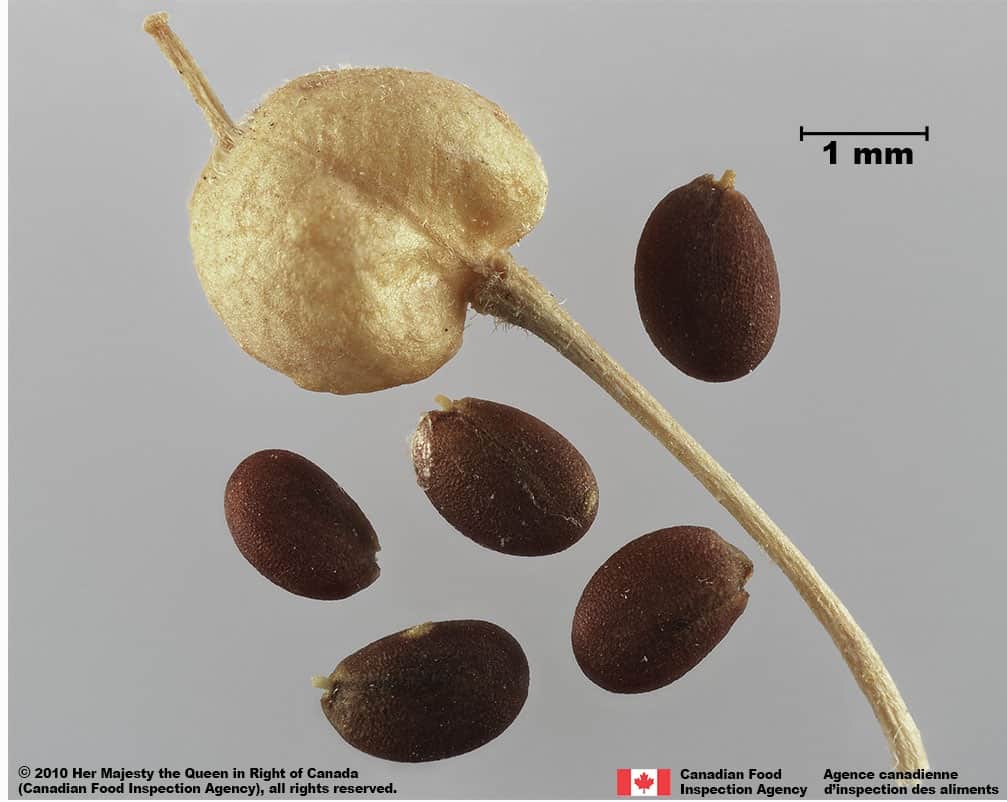
Lepidium appelianum
Brassicaceae
Globe-pod hoary cress (Lepidium appelianum) seeds and pod
SIMILAR SPECIES
ESPÈCES SEMBLABLES
Lepidium appelianum
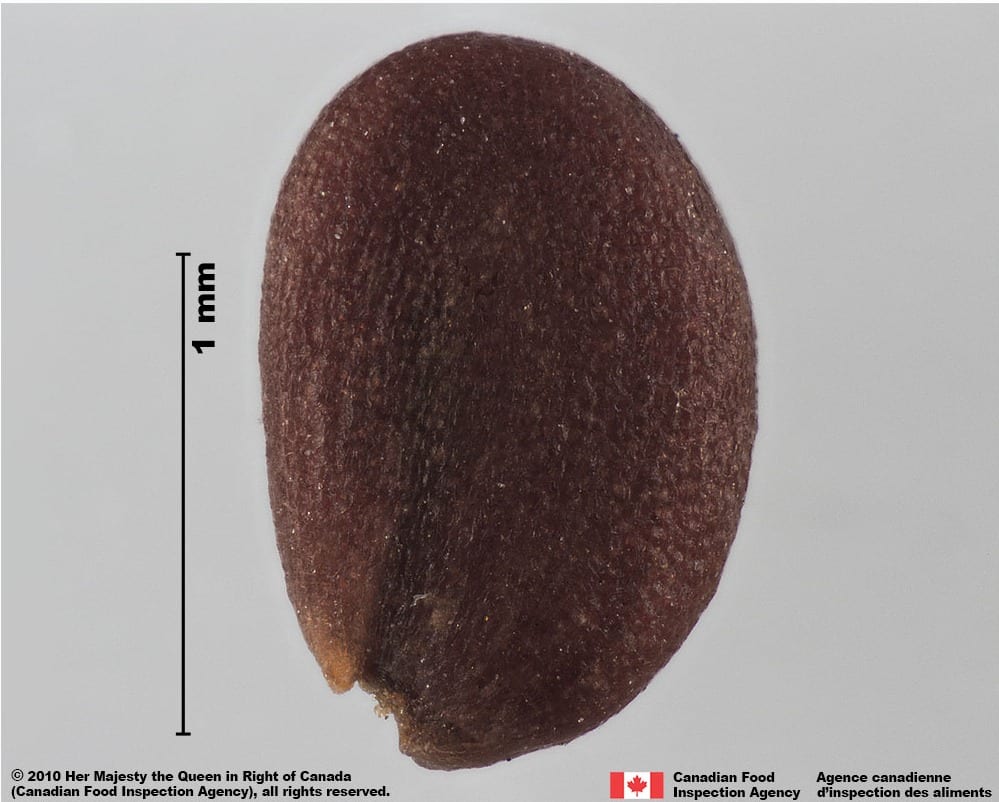
Lepidium appelianum
Brassicaceae
Globe-pod hoary cress (Lepidium appelianum) seed
SIMILAR SPECIES
ESPÈCES SEMBLABLES
Lepidium appelianum
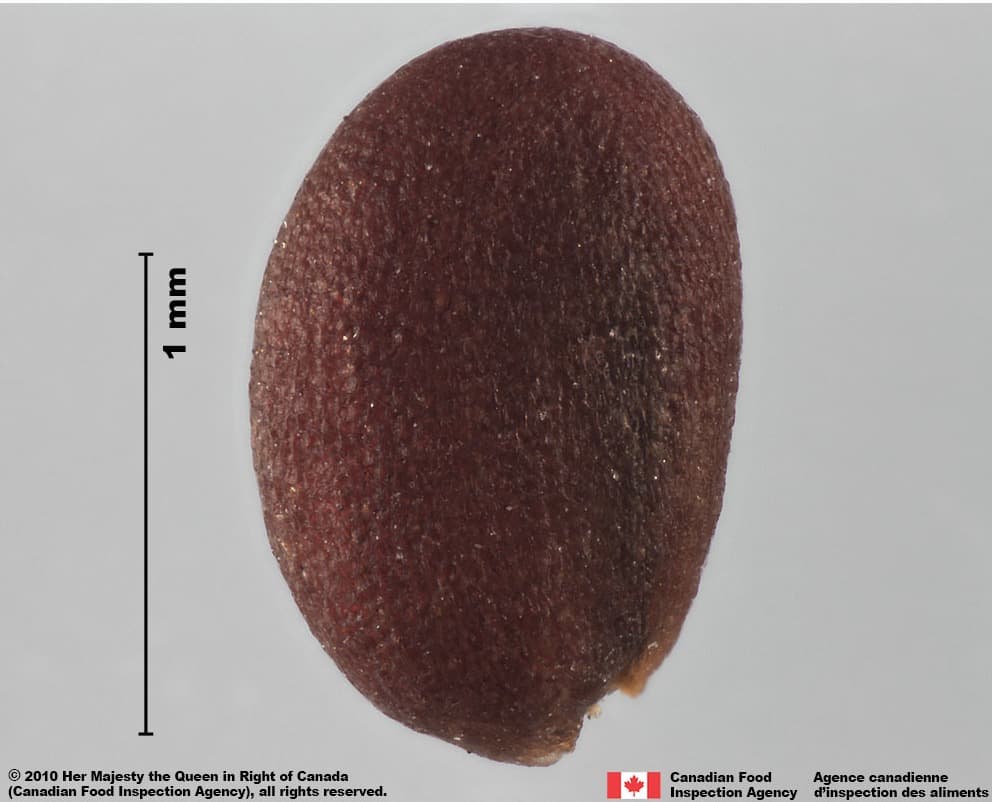
Lepidium appelianum
Brassicaceae
Globe-pod hoary cress (Lepidium appelianum) seed
SIMILAR SPECIES
ESPÈCES SEMBLABLES
Lepidium appelianum
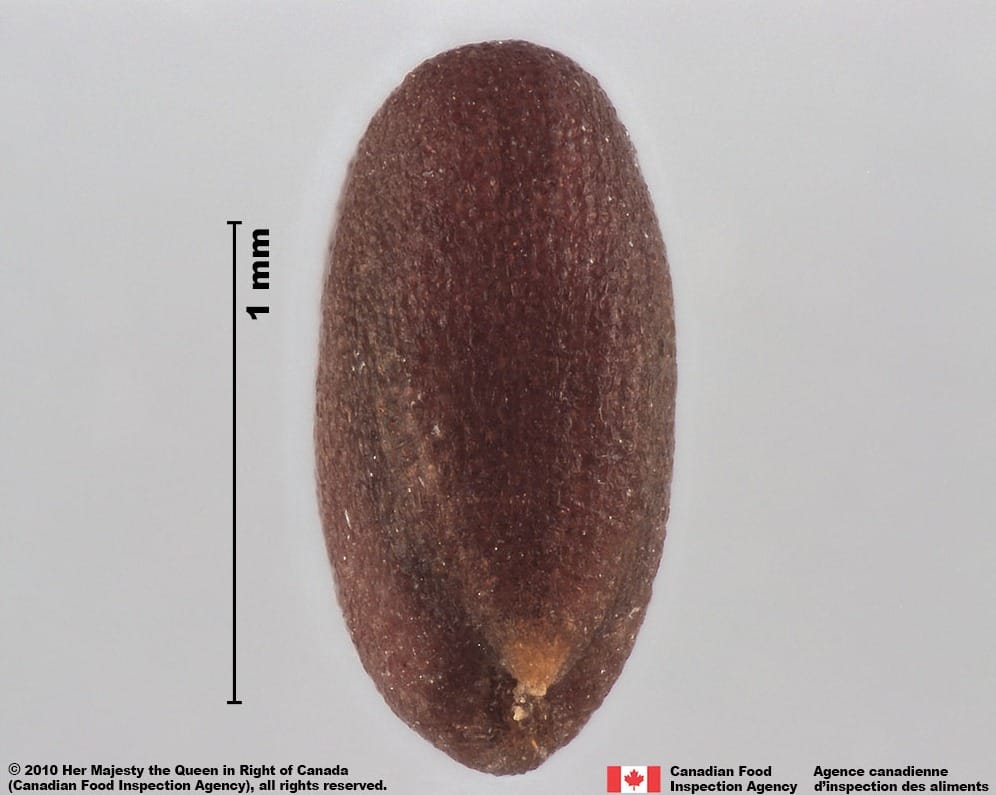
Lepidium appelianum
Brassicaceae
Globe-pod hoary cress (Lepidium appelianum) seed, hilum view
SIMILAR SPECIES
ESPÈCES SEMBLABLES
Lepidium appelianum

Lepidium appelianum
Brassicaceae
Globe-pod hoary cress (Lepidium appelianum) seed, close-up view of the hilum
SIMILAR SPECIES
ESPÈCES SEMBLABLES
Lepidium appelianum
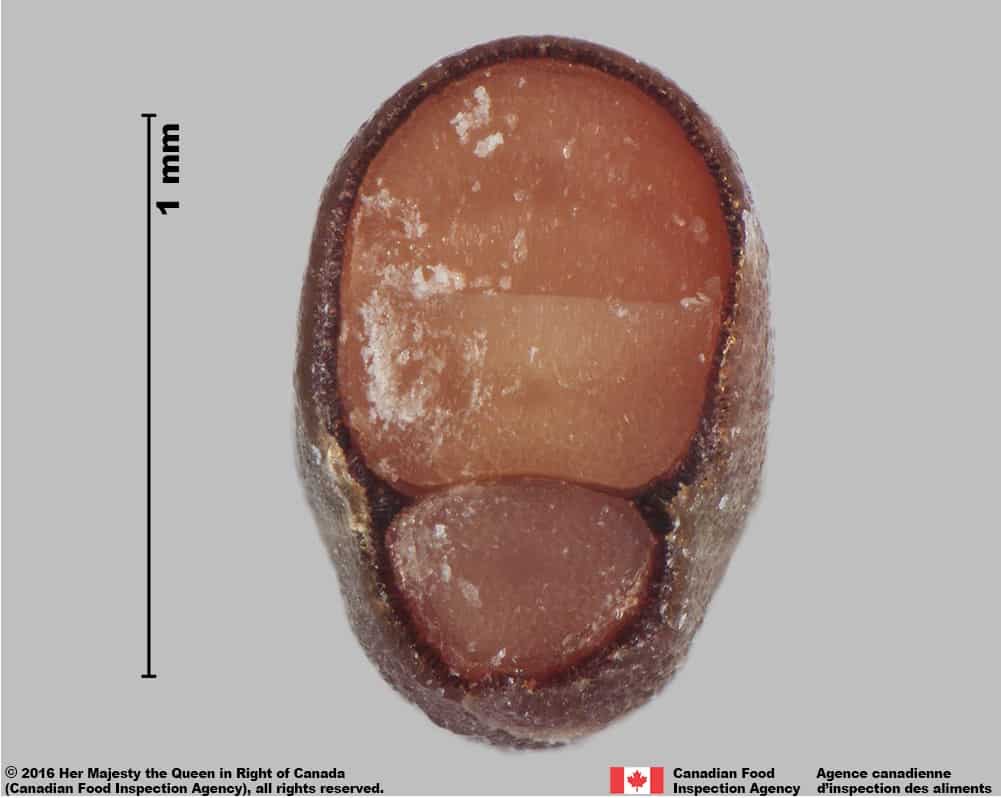
Lepidium appelianum
Brassicaceae
Globe-pod hoary cress (Lepidium appelianum) seed, cross-section
Need ID Help?
Besoin d’aide pour l’identification?
Reference(s)
Référence(s)
Brouillet, L., Coursol, F., Meades, S. J., Favreau, M., Anions, M., Bélisle, P. and Desmet, P. 2010+. VASCAN, the database of vascular plants of Canada. http://data.canadensys.net/vascan/ Accessed April 26, 2021.
Centre for Agriculture and Bioscience International (CABI). 2021. Invasive Species Compendium, CAB International, Wallingford, UK. https://www.cabidigitallibrary.org/journal/cabicompendium Accessed April 26, 2021.
Darbyshire, S. J. 2003. Inventory of Canadian Agricultural Weeds. Agriculture and Agri-Food Canada, Research Branch. Ottawa, ON.
Flora of North America (FNA) Editorial Committee, eds. 1993+. Flora of North America North of Mexico [Online]. 22+ vols. New York and Oxford. http://beta.floranorthamerica.org. Accessed December 29, 2022.
Francis, A. and Warwick, S. I. 2008. The Biology of Canadian Weeds. 3. Lepidium draba L., L. chalepense L., L. appelianum Al-Shehbaz (updated). Canadian Journal of Plant Science 88: 379-401.
Global Biodiversity Information Facility (GBIF) Secretariat. 2022. https://doi.org/10.15468/39omei Accessed via https://www.gbif.org/species/5376961 Accessed December 29, 2022.
Government of Canada (GC). 2016. Canadian Weed Seeds Order. https://laws-lois.justice.gc.ca/eng/regulations/SOR-2016-93/page-2.html (English) https://laws-lois.justice.gc.ca/fra/reglements/DORS-2016-93/page-2.html (French)
International Seed Morphology Association (ISMA). 2020. Method for Seed Size Measurement. Version 1.0. ISMA Publication Guide. https://www.idseed.org/authors/details/method_for_seed_size_measurement.html
U.S. Department of Agriculture-Agricultural Research Services (USDA-ARS). 2021. Germplasm Resources Information Network (GRIN), https://npgsweb.ars-grin.gov/gringlobal/taxon/taxonomysimple.aspx Accessed April 26, 2021.



